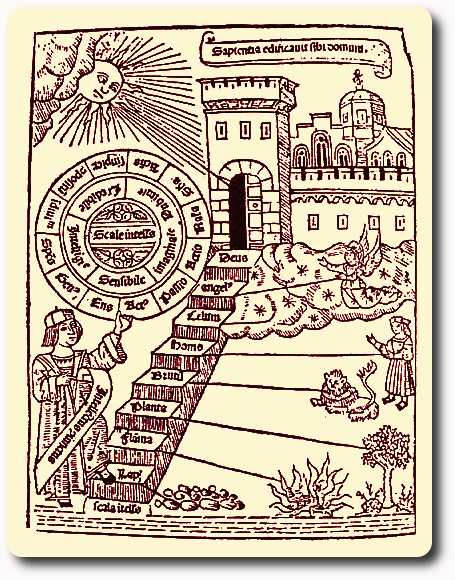| Tikalon Blog is now in archive mode.
An easily printed and saved version of this article, and a link
to a directory of all articles, can be found below: |
|
This article |
| Directory of all articles |
Physical Hierarchies
June 7, 2010
Hierarchies are an important learning aid. Just as datelines help to put historical facts into perspective, ordering objects according to the strength of a physical property allows a better understanding of both the objects and that property. One of the simplest materials hierarchies is the
Mohs scale of mineral hardness, which is a ranking of the hardness of common minerals according to which will scratch the others. This hierarchy of materials is shown in the table, along with a more analytical measure of hardness, the
Sclerometer hardness.
| Moh Hardness | Sclerometer Hardness | Mineral | Composition |
| 1 | 1 | Talc | Mg3Si4O10(OH)2 |
| 2 | 3 | Gypsum | CaSO4(H2O)2 |
| 3 | 9 | Calcite | CaCO3 |
| 4 | 21 | Fluorite | CaF2 |
| 5 | 48 | Apatite | Ca5(PO4)3(OH,Cl,F) |
| 6 | 72 | Orthoclase Feldspar | KAlSi3O8 |
| 7 | 100 | Quartz | SiO2 |
| 8 | 200 | Topaz | Al2SiO4(OH,F)2 |
| 9 | 400 | Corundum | Al2O3 |
| 10 | 1600 | Diamond | C |
One of the most fundamental properties is length, and physical size was likely the most important hierarchy to early humans - Small animals are for eating, but large animals should be avoided. This early hierarchy, which spanned the size scale from grains of sand (~1 mm) to heights of mountains (~10,000 meters), covered seven orders of magnitude. Scientific instruments have probed length over an incredibley larger scale, from the diameter of the
electron (5.63x10
-15 meters) to the diameter of the
observable universe (7.37x 10
23 meters).
Hierarchies are easy to build when quantities have numbers attached to them, like length, but hierarchies were built throughout much of history based on what were thought to be
obvious qualitative principles. A short article in the May issue of
Nature Physics [1] used an illustration, called the
Lullian staircase from a 1512 book,
De nova logica, by Ramon Llull, as shown below [2].

Although it's hard to read from this small figure, Llull ordered all objects, both physical and spiritual, according to the hierarchy, Earth, Fire, Plants, Animals, Humans, Celestial Objects, Angels, and God. This hierachy seems to proceed according to complexity. As a materials scientist, I would reverse the order of Fire and Earth, since mineral crystals have a much lower entropy than hot air. The ordering of the rest seems logical to me, but in this case I'm thinking more like a human and less like a scientist.
References:
- Andreas Trabesinger, "Hierarchy of sciences: How hard is physics?" Nature Physics, vol. 6, no. 5 (May, 2010), p.327.
- Image from Ramon Lull, De nova logica (1512), republished by Kostis Velonis, "Once More to this Staircase: Another Look at Encore à cet Astre".
Permanent Link to this article